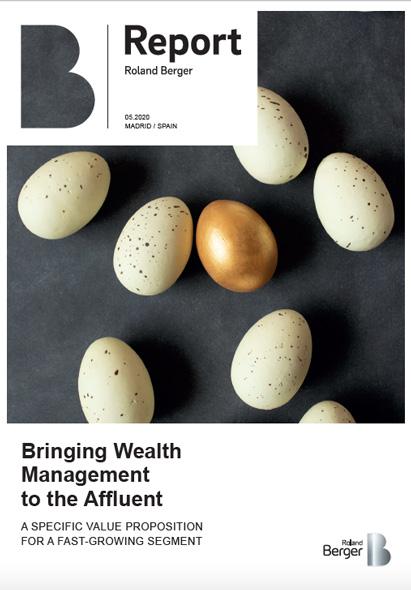Bringing Wealth Management to the Affluent
![{[downloads[language].preview]}](https://www.rolandberger.com/publications/publication_image/ACQ346_Roland_Berger_FS_Bringing_wealth_Cover_download_preview_download_preview.jpg)
With changing demographics, new customer behaviors and advances in technology, the affluent segment will become highly relevant for wealth managers.


"To capture untapped opportunity in affluent segment, WMs have to define tailored value propositions."
The fast-growing segment of the so-called affluents, signifying private individuals with investment assets valued at between 100,000 to 1 million euros, will in the medium term become highly relevant for wealth managers.
With changing demographics, new customer behavior, and advances in technology, wealth managers have a unique opportunity to gain market share in this underserved segment. To do this, they need to reconsider their approach and adopt a new mindset. These are the key findings of our new study, “Bringing Wealth Management to the Affluent.”
Today, total wealth in the affluent segment is estimated at over 124 trillion US dollars, offering a significant opportunity for wealth managers. If only about 30 percent of that amount were made up of addressable assets, fee potential would still range from 4 to 7 billion US dollars. Currently, the affluent segment accounts for just 5 to 10 percent of total assets under management in firms that focus on private banking.
Not surprisingly, this considerable potential has proved attractive to all players in the industry, including big asset managers offering passive investment. However, there are two main reasons why we believe the affluent segment remains underserved.
The first point is that these affluent investors are not being offered the tailor-made products they need. What often happens is that wealth managers “industrialize” their private banking offering for affluent investors, making them more attractive for the segment. Alternatively, they tailor mass-market offerings to make them more sophisticated. However, neither method works because what affluent customers actually need varies significantly from the requirements of both high-net-worth and mass-market individuals.

The second reason that the affluent market is being underserved is that there is a noticeable lack of cost-efficiency trade-offs. This is because currently the technology does not exist that would help financial players learn more about the affluent investor segment and enable them to deliver tailored value propositions efficiently.
There is no single way to address this challenge successfully. However, we can offer three important key recommendations for wealth managers that want to increase their market share in the affluent segment.
Firstly, to access this promising market, they need to segment clients according to their lifecycle stage, profile, and potential needs. This would allow for the heterogeneity of the segment: A 60-year-old with financial assets valued at over 100,000 U.S. dollars and an income of 75,000 U.S. dollars will most probably need quite different wealth management and financial advice than a 30-year-old professional with the same amount of assets and income.
Secondly, we believe that wealth managers should build their proposition around the specific key life events of their affluent clients – such as raising a family, college education, and retirement. By linking their recommendations to these key milestones, managers will be better equipped to respond to their clients’ real needs and concerns.
Thirdly, wealth managers should design a “wow” customer experience and engage with their clients over digital channels. To become more efficient, they must embrace new technology, putting clients at the center of their strategy, simplifying touch-points, and ultimately creating a seamless, omnichannel customer experience.

![{[downloads[language].preview]}](https://www.rolandberger.com/publications/publication_image/ACQ346_Roland_Berger_FS_Bringing_wealth_Cover_download_preview_download_preview.jpg)
With changing demographics, new customer behaviors and advances in technology, the affluent segment will become highly relevant for wealth managers.